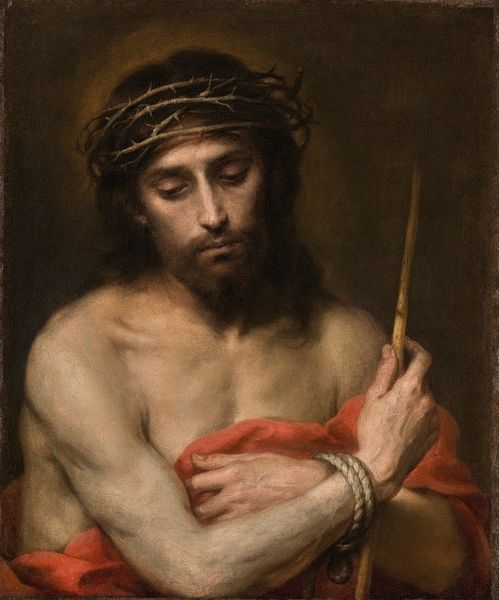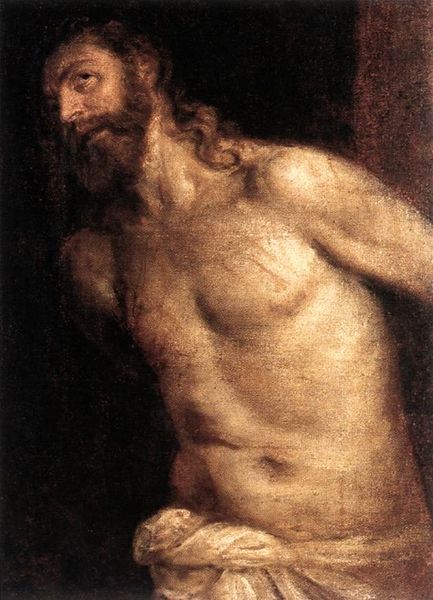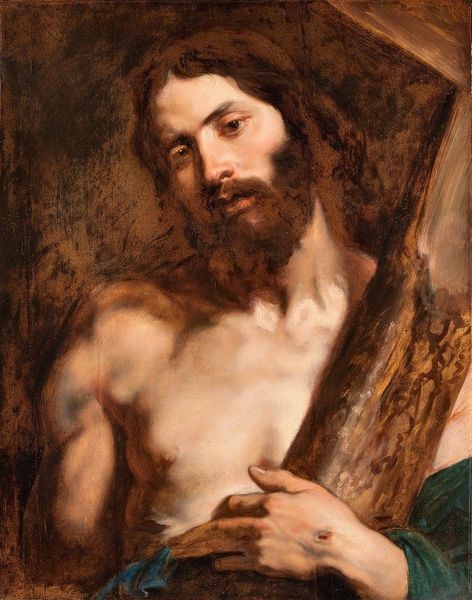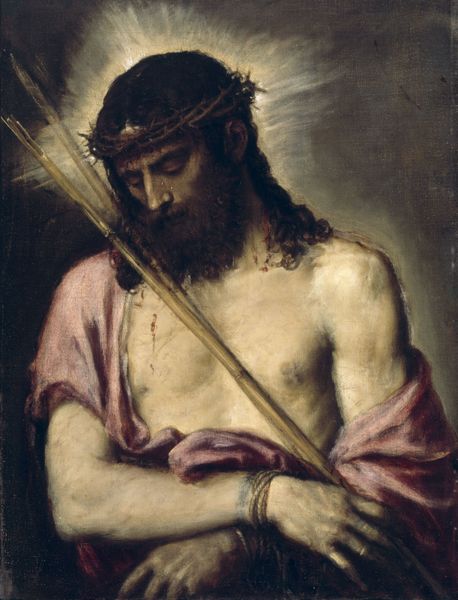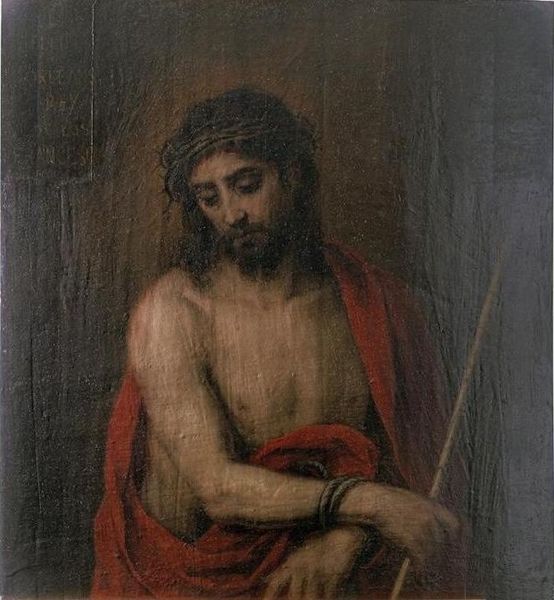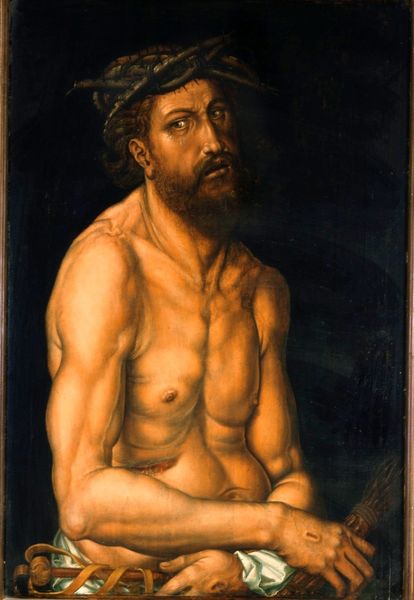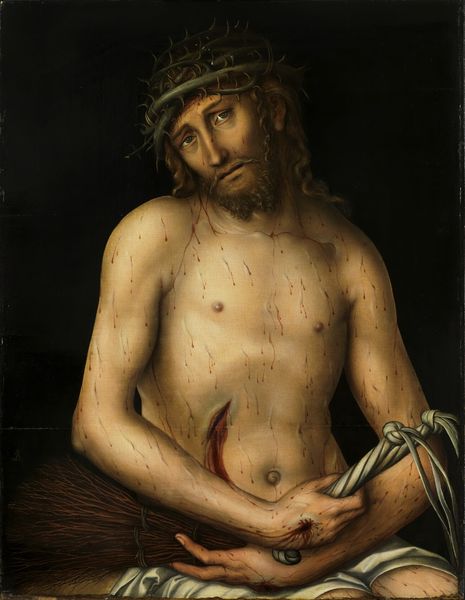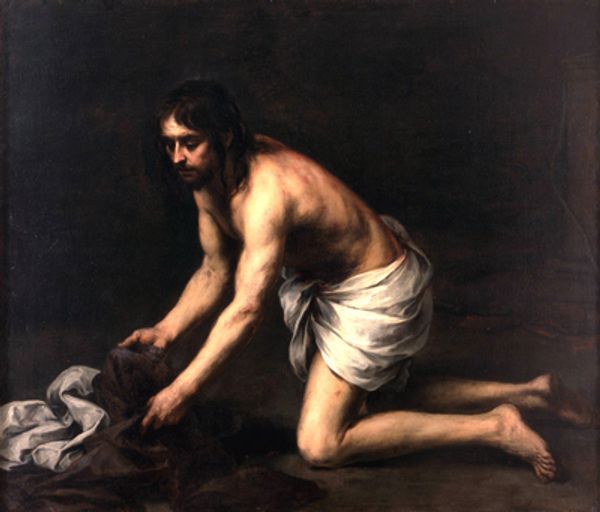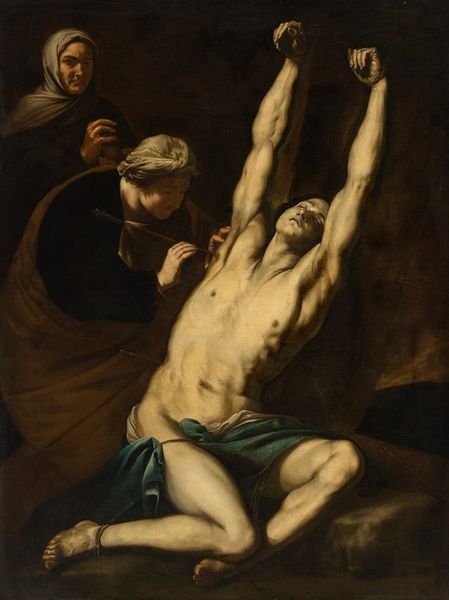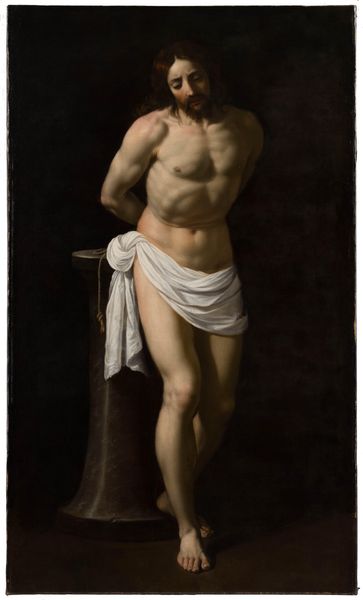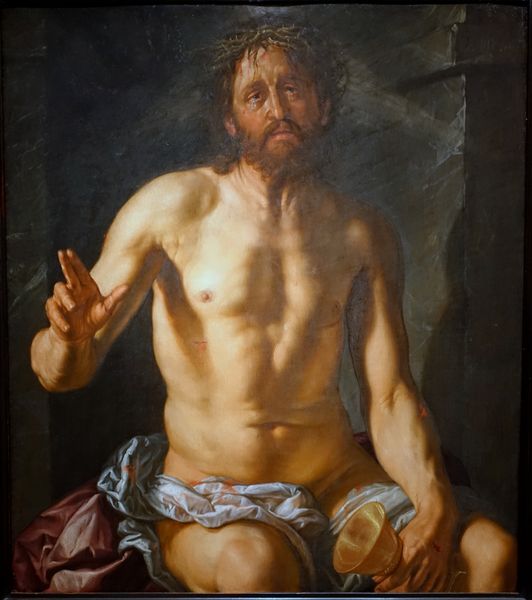
painting, oil-paint
#
portrait
#
high-renaissance
#
painting
#
oil-paint
#
figuration
#
history-painting
#
italian-renaissance
#
nude
Copyright: Public Domain: Artvee
Editor: This is Titian's "Ecce Homo" from 1547, created using oil paint. I find the figure very moving. How does the Renaissance workshop inform this particular work, given its potent emotional weight? Curator: This painting throws into sharp relief the conditions of its creation. The studio would have operated like a small factory. Think of the various roles in the execution: grinding pigments, preparing the canvas, laying in the initial composition. Each step impacts the final image, so how do the materials speak to us? Editor: Well, the oil paint itself seems almost… fleshy. It builds up a real sense of the figure’s physical suffering through the impasto, but what do you mean? Curator: Consider the source and cost of ultramarine, for instance, derived from lapis lazuli. The availability and expense of specific pigments dictated the visual outcome and speaks volumes about Titian's clientele and their expectations regarding luxury and status. What about the canvas itself? Its weave, its preparation? All material considerations, right? Editor: That's true! The rough texture almost clashes with the smoothness of the skin, a physical reminder, which really enhances that tactile sense of discomfort. So, the economics of pigment, the texture of the support – it all adds to the narrative? Curator: Precisely. This wasn’t created in a vacuum. Patronage, labor, and the accessibility of resources all played their part. Think of the economic disparity represented: the price of the painting versus the figure’s lack of earthly possessions, so even a portrait conveys it. Editor: This focus makes me rethink everything I see now. Art isn't just the artist’s vision, it is the outcome of socio-economic conditions! Curator: Yes! This makes art a powerful record, no?
Comments
No comments
Be the first to comment and join the conversation on the ultimate creative platform.
